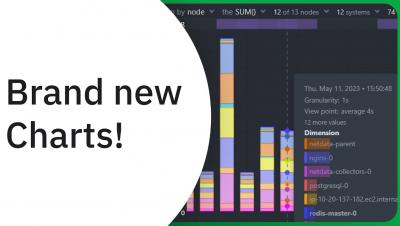Introducing Charts v3.0: Slice, dice, filter and pivot the data in any way possible!
We are excited to announce Netdata Charts v3.0 and the NIDL framework. These are currently available at Netdata Cloud. At the next Netdata release, the agent dashboard will be replaced to also use the same charts.











